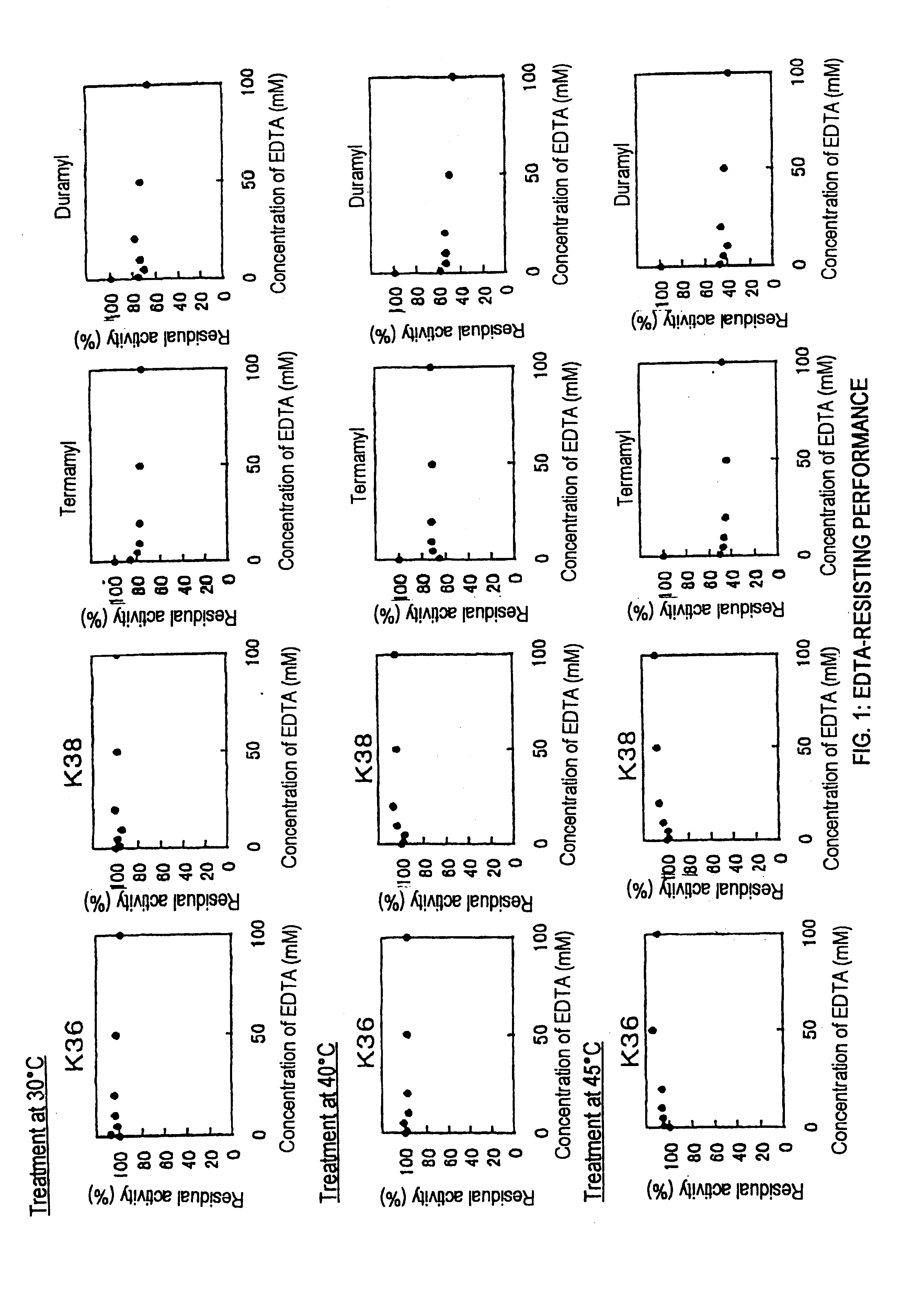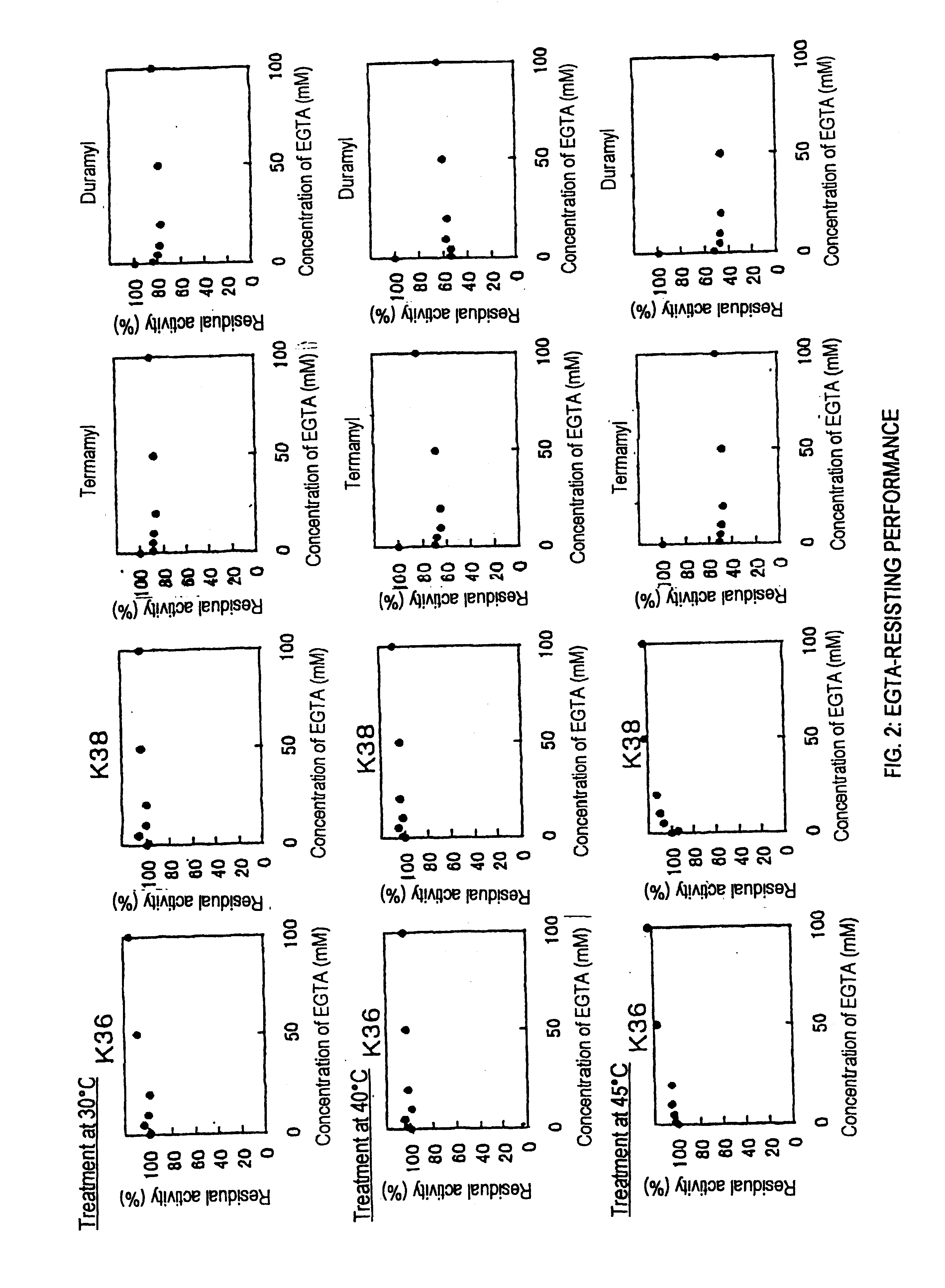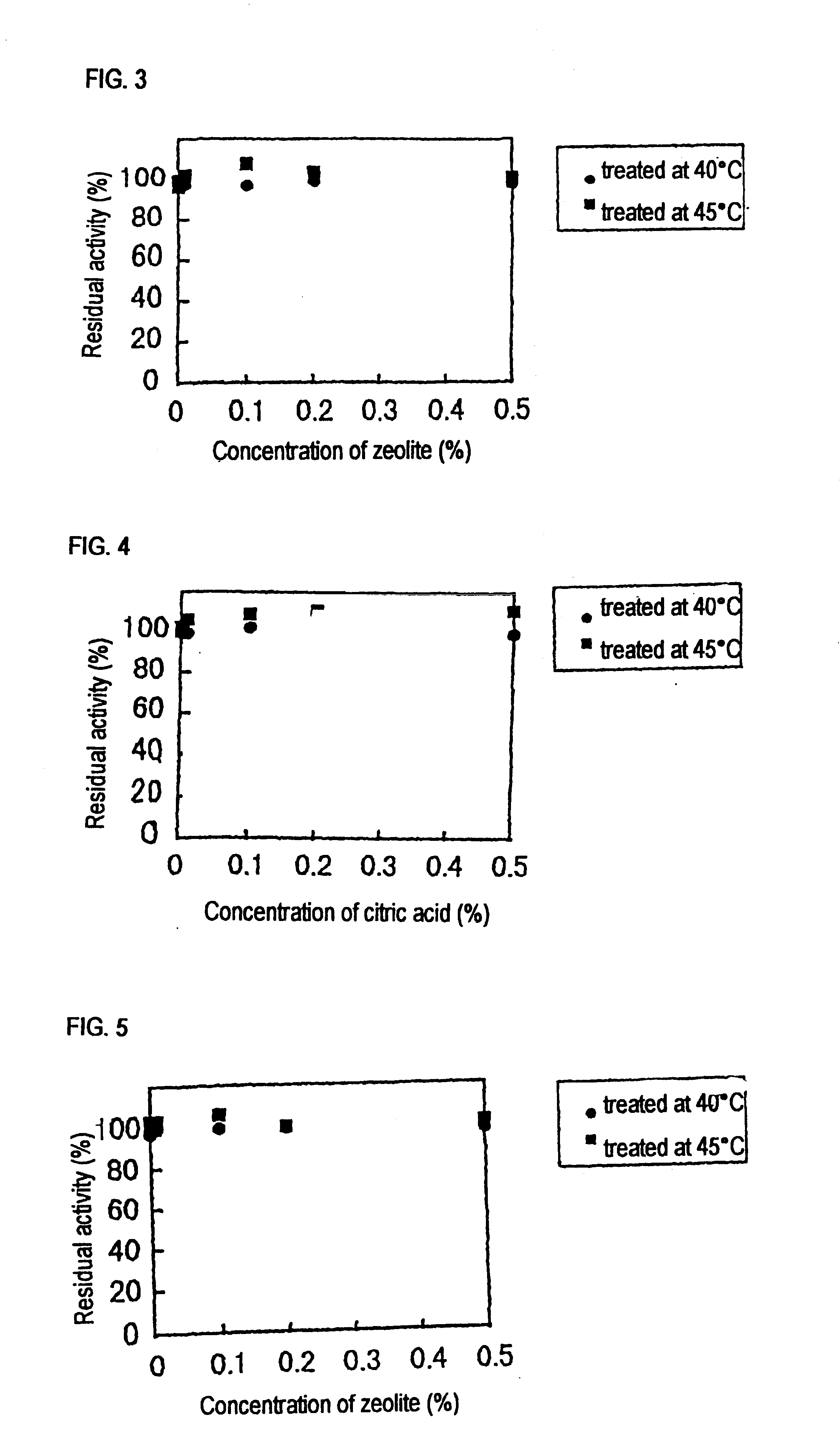Amylases
a technology of alkaline amylases and liquefying amylases, which is applied in the field of liquefying alkaline amylases, can solve the problems of insufficient chelating agent resistance performance, inconvenient use, and inability to liquefy amylases (termamyl and duramyl, products of novo nordisk a/s)
- Summary
- Abstract
- Description
- Claims
- Application Information
AI Technical Summary
Benefits of technology
Problems solved by technology
Method used
Image
Examples
example 1
Screening of Liquefying Alkaline Amylases Having Chelating-agent-resisting Performance
[0065]In sterilized water was suspended about 0.5 g of soil, followed by heating at 80° C. for 15 minutes. The supernatant after heat treatment was diluted properly with sterilized water, and then it was spread onto an agar medium A for isolation of amylase-producing microorganisms. Colonies were then formed by incubation at 30° C. for 2 days. The colony having at the periphery thereof a transparent halo formed by the hydrolysis of starch was selected and it was separated as amylase-producing bacteria. The isolated bacteria were inoculated on a medium B, followed by aerobic culture at 30° C. for 2 days under shaking. After centrifugal separation of the resulting culture, chelating-agent (EDTA) resisting performance of crude amylase in the resulting supernatant was measured. In addition, the optimum pH of the crude amylase was measured, and thus bacteria producing the liquefying alkaline amylase of ...
example 2
Culture of the Strains KSM-K36 and KSM-K38
[0069]On the liquid medium B as described in Example 1, each of the strains KSM-K36 and KSM-K38 was inoculated, followed by aerobic culture at 30° C. for 2 days under shaking. The amylase activity (pH 8.5) of the supernatant obtained by centrifugal separation was measured. As a result, it has been found that the culture solutions had activity of 1177 U and 557 U / L, respectively.
example 3
Purification of the Liquefying Alkaline Amylases of the Present Invention
[0070]Ammonium sulfate was added to the supernatant culture of the strain Bacillus sp. KSM-K36 to give 80% saturation, followed by stirring. The precipitate so formed was collected and dissolved in a 10 mM Tris-hydrochloric acid buffer (pH 7.5) containing 2 mM CaCl2, followed by dialysis overnight against the buffer. The inner dialyzate was thereafter applied to DEAE-TOYOPEARL 650 M column which had been equilibrated with the same buffer, and then protein was eluted with a linear concentration gradient of NaCl (0 M to 1 M) in the same buffer. After dialysis of active fractions against the above-described buffer, further purification was carried out by gel-filtration column chromatography. Active fractions thus obtained were dialyzed against the same buffer, which made it possible to obtain a purified enzyme providing a single band by both polyacrylamide gel electrophoresis (gel concentration: 10%) and sodium-do...
PUM
| Property | Measurement | Unit |
|---|---|---|
| Temperature | aaaaa | aaaaa |
| Temperature | aaaaa | aaaaa |
| Temperature | aaaaa | aaaaa |
Abstract
Description
Claims
Application Information
 Login to View More
Login to View More - R&D
- Intellectual Property
- Life Sciences
- Materials
- Tech Scout
- Unparalleled Data Quality
- Higher Quality Content
- 60% Fewer Hallucinations
Browse by: Latest US Patents, China's latest patents, Technical Efficacy Thesaurus, Application Domain, Technology Topic, Popular Technical Reports.
© 2025 PatSnap. All rights reserved.Legal|Privacy policy|Modern Slavery Act Transparency Statement|Sitemap|About US| Contact US: help@patsnap.com



